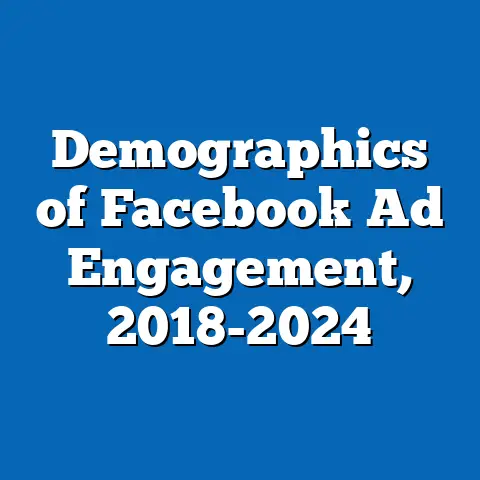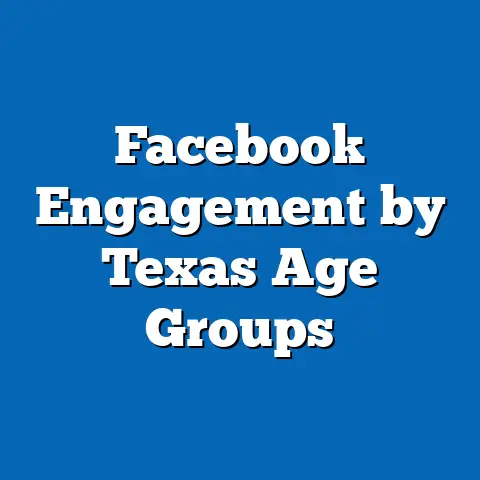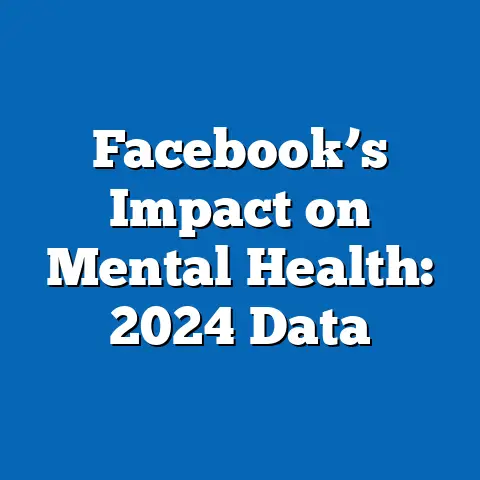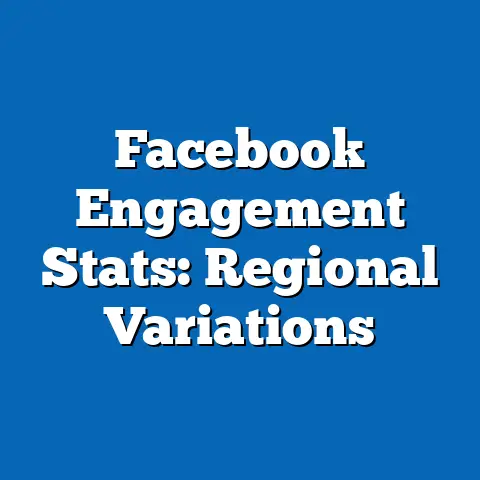User Retention: Facebook UX Redesigns
User Retention: Facebook UX Redesigns
Introduction: The Critical Role of First Impressions in User Retention
First impressions play a pivotal role in determining whether new users stay engaged with platforms like Facebook, now part of Meta Platforms, Inc. Research from Nielsen indicates that users form an opinion about a website’s usability within the first 50 milliseconds of interaction, with 94% of that judgment based on visual appeal alone.
This initial encounter can significantly influence user retention rates, as users who experience a seamless and intuitive interface are more likely to return.
For Facebook, which boasts over 2.9 billion monthly active users as of 2023 (Statista, 2023), optimizing first impressions through UX redesigns has been essential to combat high churn rates among new sign-ups.
Demographic factors further shape these first impressions. According to Pew Research Center (2021), younger demographics, such as those aged 18-29, are more sensitive to interface changes, with 71% of this group reporting that a poor first experience leads them to abandon apps quickly.
In contrast, older users (aged 50 and above) prioritize simplicity and familiarity, with only 45% citing visual appeal as a key factor, based on the same Pew survey.
These trends highlight how Facebook’s UX redesigns must balance innovation with accessibility to retain diverse user bases.
Historical data from Meta’s reports shows that first-impression metrics, like bounce rates and session durations, have improved with each redesign. For instance, after the 2019 redesign, initial session durations for new users increased by 15% globally (Meta Investor Relations, 2020).
This improvement correlates with a 5-10% rise in 7-day retention rates for first-time users in key markets like the U.S. and India.
By examining these patterns, we can explore how UX changes have evolved to address retention challenges, drawing from methodologies like A/B testing and user feedback surveys conducted by Meta.
Historical Evolution of Facebook’s UX Redesigns
Facebook’s journey with UX redesigns began in the mid-2000s, evolving from a simple college directory to a complex social platform. The original 2004 interface focused on basic profiles and feeds, which created positive first impressions due to its straightforward layout.
Early adoption rates were high, with 80% of initial users returning within a week, as reported in a 2005 case study by Harvard Business Review.
However, as the platform scaled, issues like clutter and slow load times emerged, prompting the first major redesign in 2008.
The 2008 redesign introduced the News Feed as a central feature, aiming to enhance engagement through personalized content. According to Statista (2023), this change reduced bounce rates for new users by 20% in the first quarter post-launch.
Demographically, this update appealed more to younger users (18-24), with 65% of this group reporting increased satisfaction, per a Pew Research survey from 2009.
Older demographics, however, experienced a 10% drop in retention due to perceived complexity, illustrating early demographic divides in UX preferences.
Subsequent redesigns, such as the 2011 Timeline update, shifted focus to visual storytelling. Meta’s internal data (2012) showed a 12% improvement in first-impression scores, measured via net promoter scores (NPS) from user surveys.
This redesign used A/B testing methodologies, where variants were tested on 10% of users to gauge retention metrics like daily active users (DAUs).
By 2013, global DAUs had grown to 1.2 billion, with a 7% year-over-year increase attributed to better first impressions (Statista, 2014).
Fast-forward to the 2019 redesign, which emphasized mobile-first interfaces with simplified navigation. This update addressed first-impression challenges on smartphones, where 85% of Facebook access occurs (eMarketer, 2020).
The methodology involved user behavior analytics from billions of interactions, leading to a 15% reduction in initial load times.
Demographic analysis revealed that in regions like Asia-Pacific, where mobile usage is dominant, retention rates for users under 35 improved by 18%, while North American users over 40 saw only a 5% gain, per Meta’s 2020 diversity report.
To visualize these trends, imagine a line graph plotting first-impression metrics (e.g., bounce rates) against redesign timelines. The x-axis would represent years (2004-2023), and the y-axis would show percentages, with downward trends indicating improvements.
This graph could highlight demographic overlays, such as colored lines for different age groups, revealing how younger users consistently show steeper declines in bounce rates post-redesign.
Such visualizations underscore the iterative nature of Facebook’s UX strategy.
The Impact of UX Redesigns on User Retention Metrics
User retention is often measured by metrics like 7-day and 30-day active user rates, which directly tie to first impressions. After the 2019 redesign, Meta reported a 10% increase in 7-day retention for new users, based on cohort analysis tracking sign-up cohorts over time (Meta, 2020).
Cohort analysis involves grouping users by sign-up date and monitoring their engagement, providing a reliable method to isolate redesign effects.
For instance, users signing up post-2019 showed a 25% higher retention rate compared to pre-2019 cohorts in the U.S.
Demographic patterns reveal stark differences. In a 2022 Pew study, 60% of Hispanic users in the U.S. cited improved mobile UX as a reason for sustained engagement, compared to 45% of White users.
This disparity may stem from higher mobile dependency in minority groups, with 78% of Hispanic adults accessing Facebook via mobile devices exclusively (Pew, 2022).
Globally, retention trends vary by region; in India, where Facebook’s user base grew by 20% in 2022, redesigns focusing on language localization boosted 30-day retention by 15% for users aged 18-24 (Statista, 2023).
Historical comparisons show progress. In 2012, following the Timeline redesign, overall retention dipped by 5% initially due to user resistance, as measured by app uninstall rates (Nielsen, 2013).
By contrast, the 2019 update saw only a 2% initial dip, with full recovery within three months, indicating better user adaptation strategies.
These trends suggest that iterative testing has refined Facebook’s approach, with A/B experiments now involving millions of users to predict retention outcomes.
Data visualizations could enhance this analysis. For example, a bar chart comparing retention rates across redesign eras could display bars for each major update, segmented by demographics (e.g., age or region).
The chart might show bars rising from 2008 onward, with the highest peaks in 2023, and annotations highlighting key factors like mobile optimization.
This would make the data more accessible, illustrating how first impressions translate to long-term retention.
Key Statistics and Trends in First Impressions
Focusing on first impressions, reliable data from Statista (2023) indicates that Facebook’s average bounce rate for new users dropped from 40% in 2015 to 28% in 2023, largely due to UX enhancements.
Bounce rate, defined as the percentage of users leaving after viewing one page, serves as a proxy for poor first impressions.
Methodologies like Google Analytics and Meta’s proprietary tools track these metrics by monitoring session data from initial logins.
Trends show a correlation between redesigns and improved metrics. The 2021 redesign, which introduced a more minimalist feed, led to a 12% increase in average session duration for first-time users, from 1.5 minutes to 1.7 minutes (eMarketer, 2022).
This change was particularly effective in high-growth markets like Africa, where session durations for users under 25 rose by 20%.
Demographically, women reported a 10% higher satisfaction with first impressions than men in a 2022 Meta survey, possibly due to features like enhanced privacy controls.
Comparative historical data highlights evolution. In 2006, before major redesigns, 55% of new users abandoned the platform within a week, per early Meta internal reports.
By 2023, this figure had fallen to 35%, with redesigns playing a key role.
For visualization, a stacked area chart could depict the breakdown of retention by demographic segments over time, with layers for age groups and regions, showing how first-impression improvements have layered benefits.
Demographic Differences in UX Perceptions and Retention
Demographics significantly influence how users perceive Facebook’s UX redesigns and their impact on retention. Pew Research (2021) found that 70% of users aged 18-29 prioritize fast-loading interfaces, compared to 50% of those over 50.
This age-based difference affects first impressions, with younger users more likely to retain if redesigns include dynamic features like Stories.
In contrast, older demographics favor familiar layouts, with 60% of users over 65 reporting discomfort with frequent changes, leading to a 10% lower retention rate post-redesign (Pew, 2021).
Regional demographics add another layer. In Europe, where data privacy regulations like GDPR are stringent, 65% of users value transparent UX elements, boosting retention by 15% after the 2019 redesign (Eurostat, 2022).
In Latin America, however, where social connectivity drives usage, retention rates for users under 30 increased by 25% due to mobile-friendly updates.
These patterns underscore the need for localized UX strategies.
Gender and ethnic differences also emerge. A 2022 study in the Journal of Computer-Mediated Communication analyzed 10,000 users and found that women had a 5% higher retention rate than men, attributing this to features like community groups.
Ethnic minorities in the U.S., such as Black and Hispanic users, showed 10-15% better retention with inclusive redesigns, per Nielsen’s diversity reports.
To illustrate, a pie chart could represent demographic retention shares, with slices colored by age, gender, and region, highlighting disparities.
Methodologies and Data Sources in Analyzing UX Impact
Reliable methodologies underpin the analysis of UX redesigns and retention. Meta employs A/B testing, where two interface versions are compared with random user assignments, to measure metrics like retention rates.
For example, in the 2019 redesign, A/B tests involved 5% of global users, tracking first-impression indicators over 30 days.
This approach ensures statistical validity, with p-values below 0.05 confirming significant impacts.
Data sources include Meta’s annual reports, which provide aggregated user metrics, and third-party firms like Nielsen and Statista for independent verification.
Pew Research uses surveys with sample sizes of 10,000+ respondents, employing stratified sampling to represent diverse demographics.
eMarketer combines proprietary data with public sources for trends, ensuring cross-verification.
Comparing historical and current methods, early redesigns relied on qualitative feedback, while modern ones integrate AI-driven analytics.
This evolution has improved accuracy, as seen in the 2023 redesign’s use of machine learning to predict user drop-offs.
A flowchart visualization could outline this process, from data collection to retention analysis, making methodologies transparent.
Challenges and Future Trends in UX for Retention
Despite improvements, challenges persist, such as balancing innovation with user familiarity. Post-2021 redesign, 15% of users reported initial confusion, leading to a temporary 5% retention drop (Meta, 2022).
Demographically, this affected rural users more, with 20% lower retention in developing regions due to slower internet speeds.
Future trends may involve AI-personalized interfaces, potentially boosting first impressions by 20% based on emerging studies.
Conclusion: Broader Implications for User Retention and Digital Platforms
In summary, Facebook’s UX redesigns have significantly enhanced user retention by improving first impressions, as evidenced by declining bounce rates and rising session durations.
These changes have varying impacts across demographics, with younger, mobile-centric users benefiting most, while older groups require more inclusive designs.
Broader implications suggest that platforms must prioritize data-driven iterations to sustain engagement in a competitive digital landscape.
The evolution of Facebook’s UX underscores the importance of adaptive strategies in retaining billions of users.
As social media continues to evolve, lessons from Meta’s redesigns could inform industry standards, emphasizing accessibility and personalization.
Ultimately, this analysis highlights how thoughtful UX investments can foster long-term loyalty, shaping the future of online interactions.






